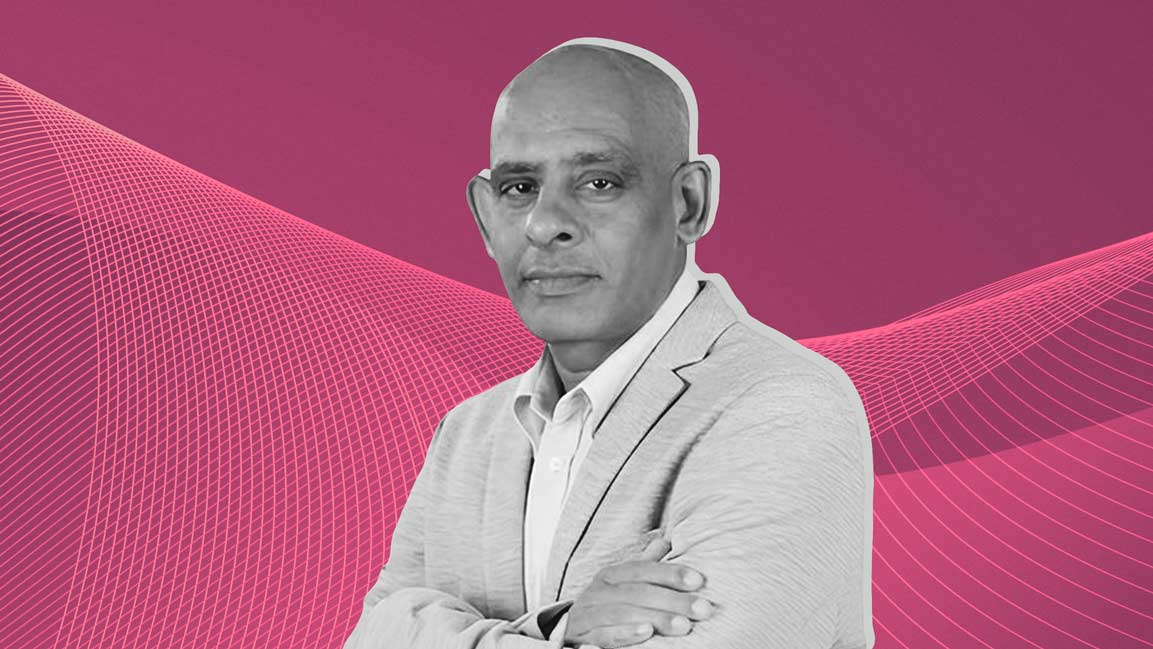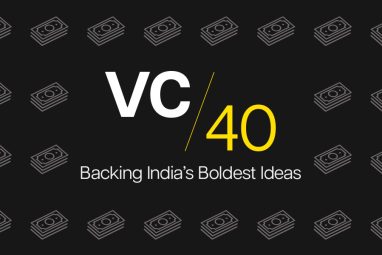Inside Kaynes Technology’s Path to $2 Billion in Revenue by 2028
From Kavach rail systems and LEO satellites to silicon photonics and camera modules, Kaynes Semicon is scaling across sectors with an India-first, full-stack manufacturing model.
News
- Google Unveils Upgraded Gemini Deep Research Agent
- OpenAI Raises the Bar for Enterprise AI with GPT-5.2
- Disney Opens Its Character Vault to OpenAI’s AI Video Push
- India Crosses 200,000 Recognized Startups
- TCS Buys US Firm Coastal Cloud in $700 Million All-Cash Deal
- OpenAI, Anthropic, and Block Form Agentic AI Foundation

Kaynes Technology is targeting $2 billion in revenue within two-and-a-half years as it scales its outsourced semiconductor assembly and test (OSAT) operations in India and expands into new verticals spanning rail safety and low-Earth-orbit (LEO) satellites, CEO Raghu Panicker told MIT Sloan Management Review India.
A subsidiary of Mysuru-based Kaynes Technology last week shipped India’s first commercially packaged multi-chip module (MCM) from its OSAT facility in Sanand, Gujarat, to Alpha and Omega Semiconductor’s headquarters in Sunnyvale, California. It now operates across the full electronics stack, spanning electronics manufacturing services (EMS), printed circuit board (PCB) manufacturing, and original design manufacturing (ODM).
Panicker spoke about the $2 billion timeline, India-first OSAT scale-up, the AOS multi-chip module shipment, and the company’s new bets in rail safety and satellites in a wide-ranging interview.
Edited excerpt:
As one of India’s leading electronics manufacturers, how has your breadth across PCB, OSAT, and semiconductor services shaped your market position?
We are a dominant electronic manufacturing services company in India’s Electronic System Design and Manufacturing (ESDM) segment. We serve automotive, medical, railways, IT, IoT, and telecom sectors, operating primarily in small- to medium-volume production across our manufacturing sites in India and abroad.
Kaynes Technology’s EMS business alone has 12 divisions serving thousands of customers. For instance, our Mysuru plant manufactures servers and AR/VR glasses, while our Hyderabad facility in Telangana produces nearly 20% of India’s smart meters. We’re also expanding into gas and water meters.
We supply lighting solutions for two-, three-, and four-wheelers across ICE and EV segments. For Indian Railways, we provide electronic interlocking and signaling systems through partners like Siemens and Hitachi. Our automotive offerings include engine control units, vehicle control units, and cluster modules.
We also manufacture high-performance servers for C-DAC, including the Rudra 1 and Rudra 2 models. The systems built at our Chamarajanagar facility were dedicated to the nation by the Prime Minister last year.
Our roadmap to $2 billion includes both organic and inorganic growth. We’ve acquired EMS companies in Oakland (US), Canada, and a railway sensor company in Austria. Since our IPO two-and-a-half-years ago, our performance has improved our capital-raising ability. That enabled us to pursue backward integration through two new units: Kaynes Semicon, focused on semiconductor manufacturing in Sanand, Gujarat, and Kaynes Circuits, dedicated to bare-board PCB manufacturing in Chennai.
With these additions, we’ve become the only Indian EMS company that also functions as an ODM, offering full-stack solutions including PCB assembly, box build, sheet metal, plastic injection moulding, and wire harnessing. Our Chennai wire harness facility supports the auto sector, while our Pune site serves Tata Motors. We also run service centers in Mumbai and Chennai to support the entire product lifecycle.
We are setting up two new subsidiaries: Kaynes Spacetech, which focuses on designing and developing low-earth orbit satellites, and Kaynes Railtech, which is developing an anti-collision system called Kavach in partnership with a German firm.
We have already designed and developed the product and have offered it to the research and development wing of Indian Railways for final approval. We’ll soon begin a pilot to test interoperability between locos and stations in real-time. Once testing and validation are complete, we expect the product to be rolled out more widely across the railway network.
You recently shipped 900 multi-chip modules to a client in California. What’s next?
We successfully delivered 900 multi-chip modules, among the most complex assemblies in semiconductors, to Alpha Omega Semiconductor (AOS). This was under the India Semiconductor Mission (ISM 1.0), where the government challenged industry to meet high-end technical milestones. We took on that challenge and executed it at pace.
These modules were produced at our Sanand facility in Gujarat, and the customer was very happy. While we were the fourth firm to get ISM approval last year, we were the first to deliver at this scale and speed.
We operate with a lean hierarchy that supports fast decisions without bureaucratic delays. We followed ISM protocols meticulously and received support from the ISM team, the Gujarat state, customs, and partners like Mitsui and AOS, who helped with materials and guidance.
Our 1,600-sq. m facility includes Class 10,000 and Class 100,000 cleanrooms, fully equipped for assembly, testing, and reliability checks.
Following this success, we plan to expand our product portfolio across different market segments. Our recently shipped Intelligent Power Module 5 (IPM5) supports washing machine spindles. Our next release, IPM7, is equally complex and will serve a different application. We can’t name the customer yet, but the upcoming products will cater to both domestic and international markets.
How does your integrated model boost competitiveness?
We’re a system design-focused company. Some customers bring a concept and ask us to design, assemble, and deliver the finished product. Others come with Gerber files and a bill of materials (BOM), and we handle the board fabrication or full assembly.
For example, Bosch works with us for bare-board PCB requirements. We also support packaging and localization for two-wheeler OEMs and home appliance brands. While semiconductor manufacturing is still largely export-oriented, we’re seeing growing domestic demand for localizing power modules such as IGBTs used in railways, energy grids, and windmills.
We’re working with two of our investee companies on silicon photonics, focusing on 3D integration and advanced packaging. At our Sanand facility, we’ve assembled a strong team that includes professionals from India, the Philippines, Penang, and local talent.
We were also the first in India to complete ISO 14001, ISO 45001, and integrated management system (IMS) audits for our production processes, something we achieved due to the right people, budget, and mindset. The ISM program is strong, but the industry needs to embrace it fully to turn this into scaled, high-quality execution.
You’re building silicon microphones, AR/VR glasses, power modules, and more. How does this align with your current R&D and emerging tech?
These are high-end products with downstream impact. Take electric two-wheelers: if semiconductor and module costs come down, OEMs can lower final product prices. We’re playing our part in that value chain.
We’ve begun producing silicon microphones, sourcing wafers from Infineon and others. These will help reduce dependence on imports in India’s headphone and wearable markets. In parallel, we’re building AR/VR glasses through a subsidiary in Mysore in partnership with DigiLens, focusing on waveguide integration.
Under the Electronics Component Manufacturing (ECM) scheme, we’ve started three major projects. One is a local camera module developed with a consortium of nine Indian firms. Every component, from image sensor to microcontroller to lens and casing, is made in India. It will support applications like dash cams and surveillance.
We’re also developing automotive display modules in partnership with a Taiwanese company and are planning to set up a semiconductor capacitor manufacturing unit in India.
We’re evaluating new plant locations in Madhya Pradesh and Bhubaneswar, and will have updates soon.
How strategic is the railway sector for Kaynes?
The sector is a major part of our diversification strategy. With the government investing in Vande Bharat, high-speed rail, and railway electrification and digitalization, we see long-term growth in this segment.
Kavach isn’t just a product but a scalable platform that can support multiple safety systems. We’re focusing on signaling, anti-collision systems, and full-stack safety architecture. Some parts are developed in-house, and others through strategic acquisitions.
With a 200-member engineering team, what capabilities are you building?
System design is core to everything we do, especially for high-end, safety-critical sectors. We need strength in thermal analysis, mechanical design, and mechatronics (the intersection of mechanical and electronics engineering).
We’re scaling our team to between 1,000 and 1,200 engineers over the next few years. We’re hiring both laterally and from campuses, and are working with universities to embed industry-relevant skills into engineering education.
This expansion is crucial for the sectors we serve: semiconductors, embedded systems, rail, and space.
How does local semiconductor packaging improve affordability for Indian consumers?
The downstream impact is significant. Affordability is key, and that comes from backward integration. When we localize production, whether it’s PCBs, modules, or full systems, we reduce costs. That helps across product categories: two-wheelers, BLDC fans, washing machines, air conditioners, water purifiers, and more.
In sectors like rail electrification and renewable energy, power semiconductors are essential. We’ve long depended on imports. While that still exists, our aim is full self-reliance in line with Atmanirbhar Bharat (self-reliant India).
You’re designing BLDC motor controllers and intelligent power modules. How do you embed sustainability?
Sustainability is embedded through design reuse and intellectual property (IP) creation. We’re not just building one-off products but creating reusable blocks that can work across applications. In our BLDC motor controllers, every component is selected with cost, performance, and reuse in mind. We work closely with manufacturers to build cost-effective modules and streamline production processes.
We’re also patenting design and process innovations in India, something that’s been underutilized. At Kaynes Semicon, we’ve already brought in 12 PhD scholars. Our goal isn’t just academic but to productize research and bring innovation to market. We’re also exploring new materials, markets, and techniques to ensure both sustainability and competitiveness.




